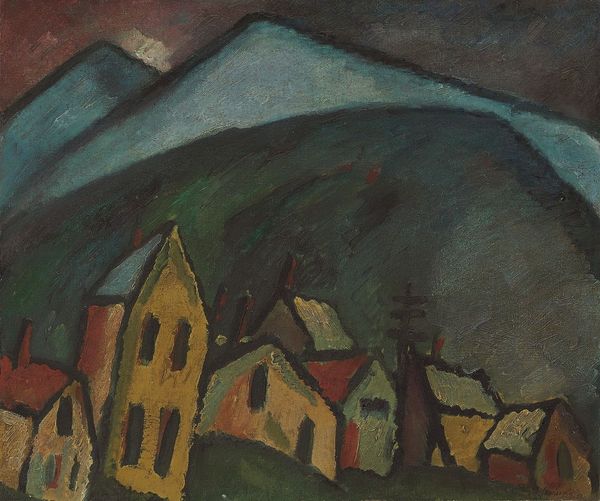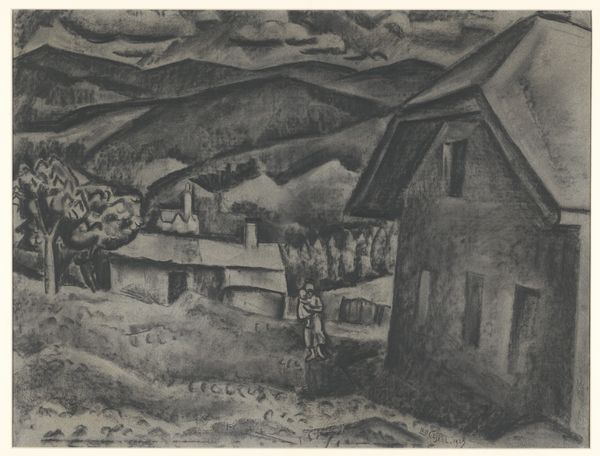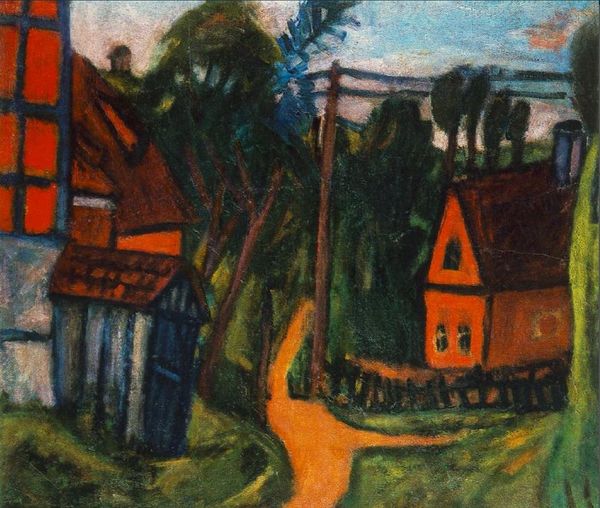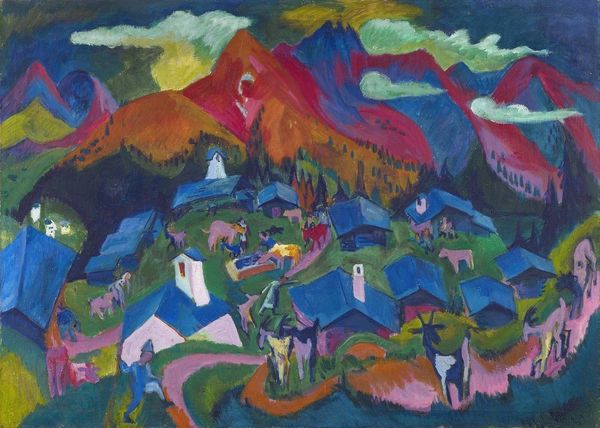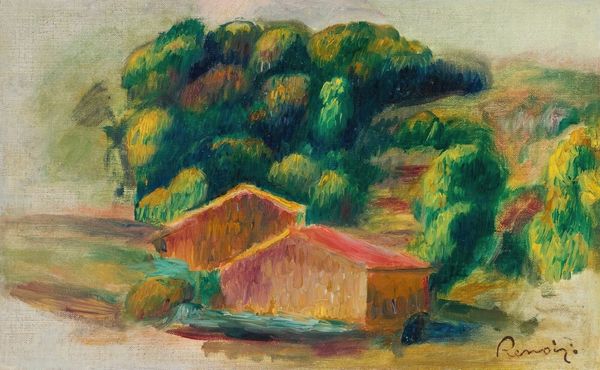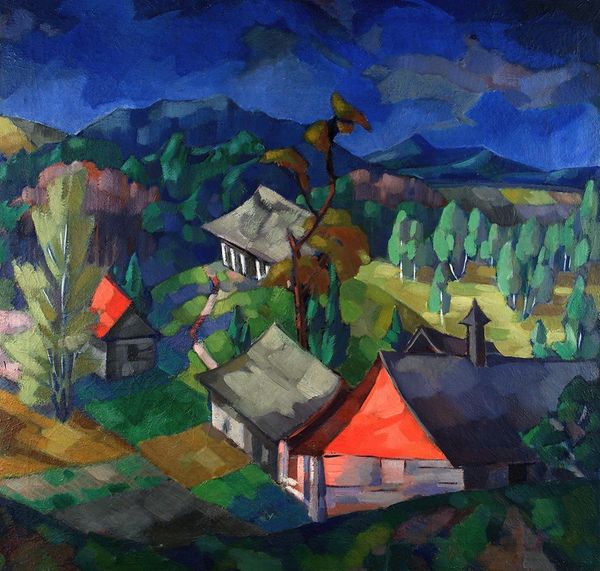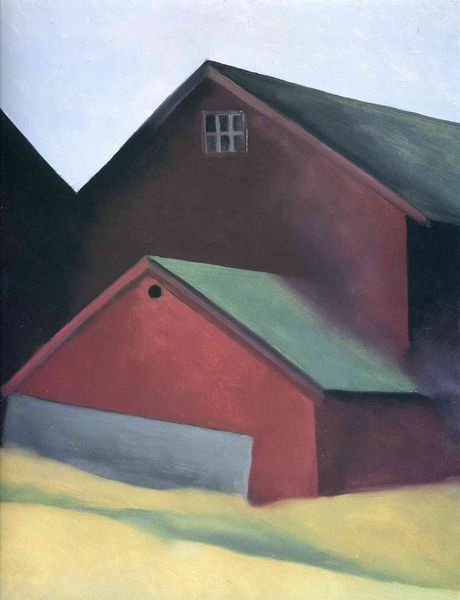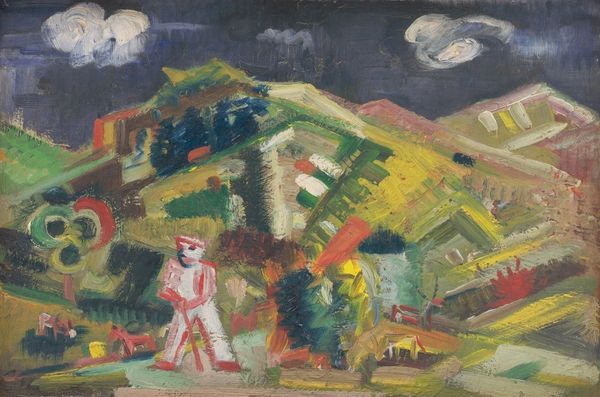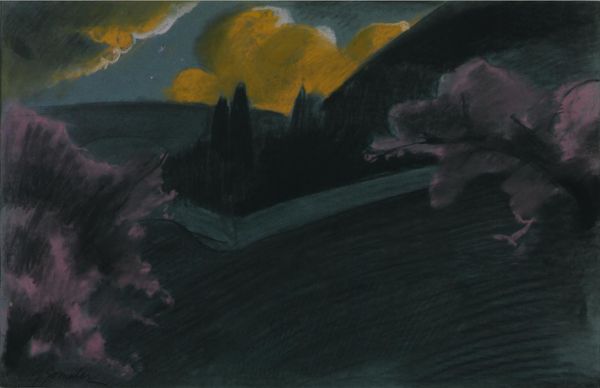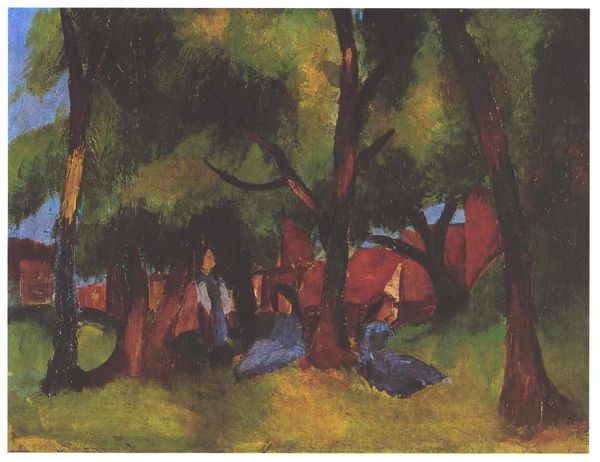
#
acrylic
#
painted
#
possibly oil pastel
#
abstract
#
oil painting
#
acrylic on canvas
#
underpainting
#
pastel chalk drawing
#
painting painterly
#
watercolour illustration
#
watercolor
Copyright: Public Domain: Artvee
Curator: Welcome. We are standing before Mikuláš Galanda's 1933 work, "Hay Barns." Editor: The simplicity of the shapes is quite striking, isn't it? Especially the way the vibrant red barns contrast against the muted landscape. Curator: Yes, Galanda, a key figure in Slovak modernism, often used simplified forms to evoke a sense of primordial connection with the land. The barns, almost iconic in their shape, recall basic shelter. Editor: The paint application is really interesting too. There’s a tactile quality despite the flatness of the composition. Look at how the colours almost vibrate. Curator: Absolutely. The limited color palette enhances the sense of symbolic weight. Red is not merely descriptive here; it perhaps represents vitality, energy bound to the earth. And the lone figure in the foreground seems to echo the forms. Editor: A very astute observation. And, by implication, there is a relationship to the land, but the position is a very lonely one? It’s quite suggestive without being didactic. Curator: I think you're right to recognize that complexity. This image invites us to consider our place within both our immediate environment and the larger context of cultural memory, what traditions we hold and whether we want to keep doing so. The shapes and color are a visual short hand. Editor: This image has an enigmatic quality—almost like a dreamscape reduced to its basic components. You start with a vision of form and composition. I could look at this canvas for hours, turning over the shapes. Curator: For me, "Hay Barns" speaks to the enduring power of basic shapes and color to convey the timelessness and mystery of humanity's relationship with the land. Editor: Agreed. I walked into a very strong form.
Comments
No comments
Be the first to comment and join the conversation on the ultimate creative platform.
